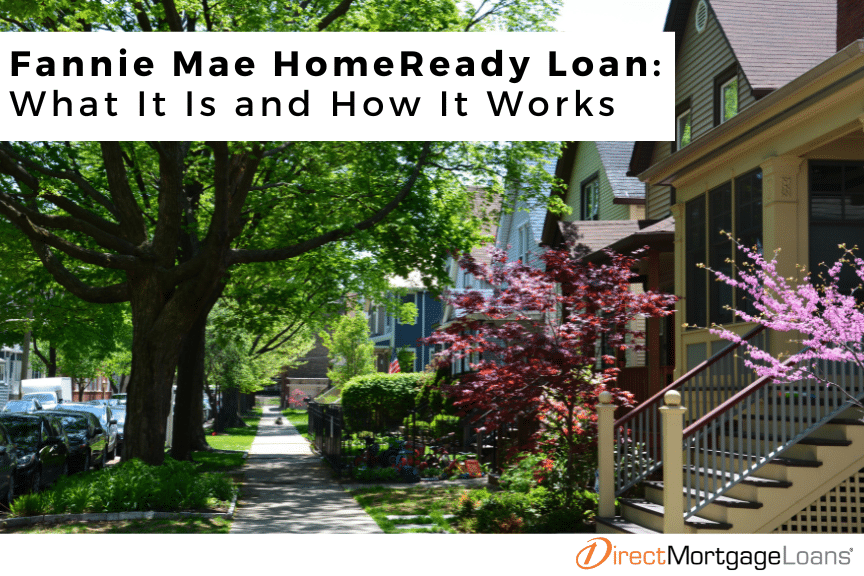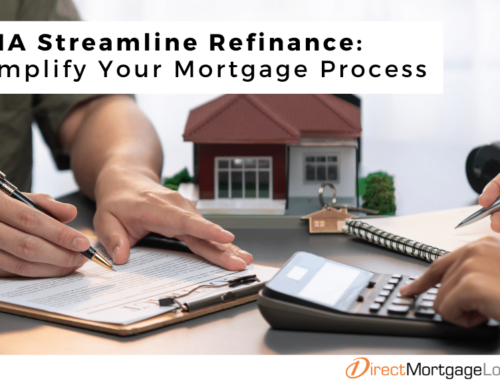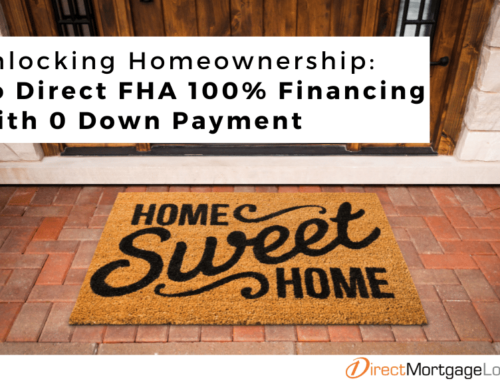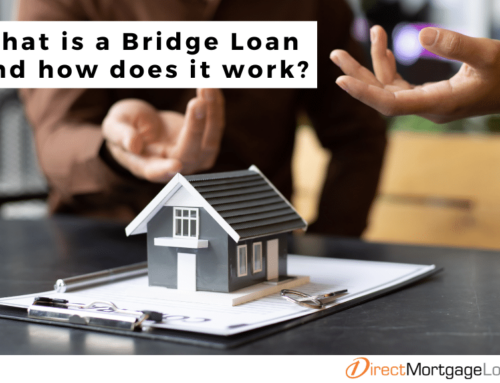If you’re looking for a mortgage option offering low down payment requirements, flexible income guidelines, and built-in support for buyers, the Fannie Mae HomeReady loan could be the right fit. This loan program is specifically designed to help low- to moderate-income borrowers achieve the dream of homeownership—even if traditional lending standards have posed challenges in the past. Whether you’re a first-time homebuyer or returning to the market, understanding the HomeReady loan program could help you make an informed, confident decision.
Subscribe to our blog to receive notifications of posts that interest you!
What is Fannie Mae’s HomeReady loan?
The Fannie Mae HomeReady loan is a government-backed mortgage program designed to make homeownership more accessible—especially for low- to moderate-income borrowers. This loan program provides flexible underwriting guidelines and down payment requirements, helping individuals and families who may not qualify for traditional conventional loans.
Unlike some other mortgage programs, HomeReady allows for non-traditional income sources to be considered, including income from roommates or extended family. It’s available to both first-time and repeat homebuyers, making it a versatile option for many looking to enter or re-enter the housing market.
How does a Fannie Mae HomeReady loan work?
HomeReady loans are structured like typical conventional loans but offer several borrower-friendly features. Borrowers could qualify with as little as 3% down, and funds for the down payment could come from a variety of sources—including gifts and grants. Fixed-rate terms are common, and buyers must complete a homeownership education course.
This loan also provides reduced private mortgage insurance (PMI) costs compared to standard conventional loans, making monthly payments more affordable. Eligible properties include single-family homes, condos, and some multi-unit properties, as long as the borrower occupies one of the units.
HomeReady vs HomePossible
If you’re comparing affordable home loan options, you might have come across both Fannie Mae’s HomeReady and Freddie Mac’s Home Possible. These two programs are designed to help low- to moderate-income borrowers achieve homeownership with minimal upfront costs. While they share some similarities, such as low down payment requirements and flexible credit standards, there are key differences that could make one a better fit for your situation.
Fannie Mae HomeReady
Fannie Mae’s HomeReady mortgage is built for today’s diverse homebuyers, especially those with limited income or savings. It stands out for its inclusive approach, considering a wider range of income sources and financial situations. Whether you’re a single parent, a multigenerational household, or someone who shares housing expenses with a roommate, HomeReady provides flexible solutions to meet your unique circumstances. The 3% down payment requirement and reduced private mortgage insurance make it one of the most affordable entry points into homeownership for eligible borrowers. Plus, the required Homeownership education ensures that buyers are not only able to purchase a home but are also well-prepared to manage it responsibly.
Freddie Mac Home Possible
Freddie Mac’s Home Possible program is another affordable lending option that requires only a 3% down payment, similar to HomeReady. However, its eligibility criteria and program features vary slightly. For instance, it offers more flexibility in certain regions when it comes to income limits, making it accessible to a broader range of borrowers depending on where they live. The program is particularly accommodating for multi-generational households by supporting shared occupancy arrangements. One key difference is that Home Possible does not allow lenders to consider income from non-borrowing household members when determining loan eligibility—something that can be a deciding factor for those who rely on extended household contributions.
What are the advantages of HomeReady?
- Low down payment: With just a 3% down payment requirement, HomeReady makes homeownership more accessible to buyers who may not have a large amount saved. This lower barrier to entry could help buyers get into a home faster compared to other conventional loans.
- Flexible income sources: HomeReady is unique in that it allows lenders to consider income from non-traditional sources—such as a roommate or extended family member living in the household. This flexibility can be especially helpful in multigenerational households or shared living situations. Consulting with a loan specialist at Direct Mortgage Loans will allow you understand which sources of income you can and cannot use.
- Reduced mortgage insurance: One of the standout features of HomeReady is the reduced cost of private mortgage insurance (PMI). This translates to lower monthly payments over time, making the loan more affordable throughout its duration.
- Homeownership education: Borrowers are required to complete an online homeownership education course through a Fannie Mae-approved provider. This helps ensure buyers are well-informed about the responsibilities of owning a home and maintaining financial stability.
- Co-borrowers allowed: HomeReady allows for co-borrowers who do not live in the home, such as parents helping a child purchase their first home. This opens up more options for borrowers who may need additional support to qualify.
HomeReady Guidelines: How To Qualify
Getting approved for a HomeReady loan involves meeting specific financial and eligibility criteria designed to ensure the borrower can responsibly manage homeownership. These requirements are structured to support creditworthy individuals who may not have access to large down payments or traditional income sources. To qualify for a HomeReady loan, borrowers typically need:
- A minimum credit score of 620: This is the baseline score required, though having a higher score could help you qualify for better interest rates and improve your overall loan approval odds.*
- Income that doesn’t exceed 80% of the Area Median Income (AMI): Your household income must fall within the designated limit for your location, which helps ensure the program is targeting those who need it most. Fannie Mae provides a tool to check your eligibility based on property address.
- To complete a homeownership education course: All borrowers must take an online course from a Fannie Mae-approved provider. This course equips you with important knowledge about budgeting, home maintenance, and the mortgage process.
- A debt-to-income (DTI) ratio generally not exceeding 50%: Your DTI compares your monthly debt payments to your gross monthly income. A lower DTI is ideal, but HomeReady offers flexibility for borrowers with strong compensating factors. These may include having significant cash reserves, a higher-than-average credit score, a long and stable employment history, or other positive financial indicators that help offset a higher DTI ratio. Lenders use these factors to determine if you’re still a strong borrower despite a slightly elevated debt load.
- Proof of steady income and employment history: Lenders will review pay stubs, W-2s, and other documentation to ensure you have a reliable source of income that supports your loan application.
HomeReady Income Limits
HomeReady loans are specifically created to support low- to moderate-income borrowers, so adhering to income limits is a critical part of the qualification process. Typically, your household income must be at or below 80% of the Area Median Income (AMI) for the property’s location. This cap ensures the program reaches those who need it most, and promotes equitable access to affordable housing.
Fannie Mae offers an easy-to-use income eligibility lookup tool to determine if your household income is at or below the AMI. By entering a property address, you can quickly determine whether your income meets the local threshold. This tool helps streamline the qualification process and allows you to plan your home purchase with confidence.
What is the minimum down payment for a Fannie Mae HomeReady loan?
The minimum down payment is 3% of the home’s purchase price. This can be paid using the borrower’s own funds or eligible sources like gifts, grants, or down payment assistance programs. This low barrier to entry makes it a strong alternative to FHA loans, especially for those who meet the income and credit requirements.
Should I get a Fannie Mae HomeReady loan?
If you’re a first-time or repeat homebuyer with moderate income and decent credit, the HomeReady loan could be a great fit. HomeReady offers some of the lowest entry requirements among conventional loans and includes reduced mortgage insurance and education to help you succeed. However, if your income exceeds the AMI limits, you may want to consider other conventional or government-backed loans.
How To Apply For Fannie Mae HomeReady Loan
Applying for a Fannie Mae HomeReady loan is a multi-step process, but it’s designed to be straightforward and borrower-friendly. Whether you’re a first-time homebuyer or looking to re-enter the market, following these steps could help ensure a smooth application journey:
- Check your eligibility: Start by using Fannie Mae’s income eligibility lookup tool to determine if you meet the program’s income limits based on your property’s location. This is a crucial first step to ensure you qualify before moving forward.
- Find a participating lender: Not all lenders offer HomeReady loans, so it’s important to work with one who is approved to originate them. Direct Mortgage Loans is a trusted option and can walk you through the process with expertise and personalized guidance.
- Get preapproved: Preapproval involves submitting key financial documents like pay stubs, W-2s, bank statements, and tax returns. Direct Mortgage Loans will review your credit profile, income, and debt to estimate how much you can afford and provide a preapproval letter.
- Complete homeownership education: You’ll need to complete the Framework homeownership course approved by Fannie Mae. This education module is designed to prepare you for long-term success as a homeowner by covering topics like budgeting, maintenance, and mortgage terms.
- Start house hunting: With your preapproval and education certificate in hand, you can start searching for a home that fits your budget and meets the HomeReady program’s property guidelines. Work with a real estate agent and your lender to submit offers and finalize your loan application once you’ve found the right home.
How to find Fannie Mae HomeReady Lenders Near Me?
Many lenders across the country offer HomeReady loans, including Direct Mortgage Loans. To find an approved lender near you, you can use Fannie Mae’s lender directory or reach out directly to a trusted loan officer at Direct Mortgage Loans who can walk you through the process.
Fannie Mae HomeReady FAQ’s
Even with all the detailed information above, you might still have some lingering questions—especially if you’re comparing HomeReady to other loan programs or navigating the homebuying process for the first time. This FAQ section is here to help clear up any confusion and address the most common concerns about the Fannie Mae HomeReady loan, so you can move forward feeling confident and well-informed.
Is Fannie Mae HomeReady an FHA loan?
No, HomeReady is not an FHA loan. It is a conventional loan product backed by Fannie Mae, whereas FHA loans are insured by the Federal Housing Administration. This distinction affects everything from mortgage insurance costs to approval guidelines. HomeReady loans typically feature reduced private mortgage insurance (PMI), making them more affordable over time. Additionally, HomeReady may allow for lower credit scores than traditional conventional loans, but higher than what’s typically accepted for FHA.
Is HomeReady only for first time homebuyers?
No, HomeReady is not limited to first-time buyers. It is open to anyone who meets the income and credit criteria. That said, it’s often a go-to option for first-time buyers due to the low down payment requirement, education component, and broader eligibility. Repeat buyers who want to purchase a new primary residence and meet the program’s qualifications can also take advantage of its benefits.
What is the maximum loan amount allowed with HomeReady?
The loan limit for HomeReady is based on the conforming loan limits set each year by the Federal Housing Finance Agency (FHFA). These limits vary by county and are adjusted annually to reflect changes in housing prices. In higher-cost areas, the maximum loan amount will be higher. To know your area’s specific limit, you can reference the FHFA’s conforming loan limit map or consult with your loan officer.
Can I use a HomeReady loan to buy a condo?
Yes, HomeReady can be used to finance approved condominium units. However, the condo project must meet Fannie Mae’s eligibility requirements, which include criteria around the financial stability of the homeowner’s association, adequate insurance coverage, and a certain percentage of owner-occupied units. Working with a knowledgeable lender can help ensure the property qualifies before you make an offer.
Can I live anywhere with a Fannie Mae HomeReady loan?
HomeReady loans are available nationwide, but qualification depends on local income limits and the property’s intended use as your primary residence. You can live in any part of the country, but your income must fall below the Area Median Income (AMI) for the property’s location. The home must also be owner-occupied, meaning you cannot use this program to purchase a second home or investment property.
Can the Fannie Mae HomeReady be used for a refinance?
Yes, the HomeReady program allows for limited cash-out refinances. This option enables homeowners to replace their current mortgage with a new HomeReady loan, which may come with better interest rates or more favorable terms. However, it does not allow for large cash withdrawals—the primary goal is to restructure the loan, lower monthly payments, or transition to a fixed-rate loan. You must still meet all other HomeReady guidelines to be eligible.
Even with all the detailed information above, you might still have some lingering questions—especially if you’re comparing HomeReady to other loan programs or navigating the homebuying process for the first time. This FAQ section is here to help clear up any confusion and address the most common concerns about the Fannie Mae HomeReady loan, so you can move forward feeling confident and well-informed.
Direct Mortgage Loans is not a credit repair company. This information is for educational purposes only. Direct Mortgage Loans, LLC NMLS ID# is 832799 (www.nmlsconsumeraccess.com). Direct Mortgage Loans, LLC office is located at 11011 McCormick Rd Ste 400, Hunt Valley, MD 21031.






Leave A Comment
You must be logged in to post a comment.